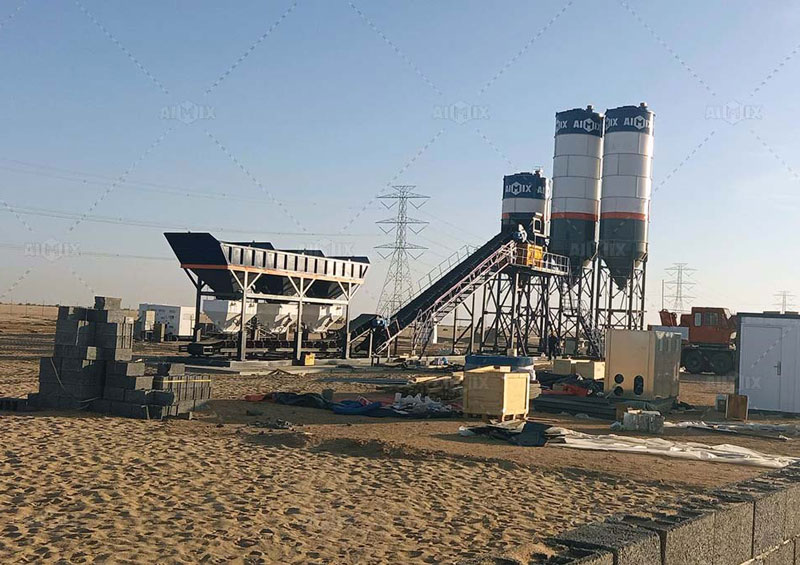The journey to acquiring a concrete batching plant is an exciting venture, yet the landscape of pricing can appear bewildering at first glance. Why does one concrete plant command a price tag double that of another with seemingly similar specifications? The answer lies not in arbitrary numbers but in a deliberate and multifaceted strategy employed by concrete plant manufacturers. These strategies are a reflection of their target market, their engineering philosophy, and the long-term value proposition they offer. Unpacking these variables reveals a fascinating ecosystem where price is a direct function of component quality, design flexibility, and the invaluable peace of mind that comes from robust support. Let’s dive into the core factors that create this dynamic pricing spectrum.
The Engineering Core: Component Hierarchy and Manufacturing Provenance
At the heart of every price variation is the fundamental build quality of the plant itself. This is the non-negotiable foundation, where manufacturers make critical decisions that dictate performance, longevity, and ultimately, cost.
The Powerplant and Structural Chassis: The Backbone of Investment
The choice of motors, drives, and the structural steel framework represents a primary cost differentiator. A plant built with industry-leading, high-efficiency electric motors and precision-engineered planetary gearboxes for the mixers will inherently cost more than one utilizing generic, less efficient components. The provenance of the steel and the quality of the welding and fabrication are equally critical. Manufacturers investing in robotic welding and rigorous non-destructive testing for their frames and mixer shells are building for a 20-year lifespan, not just a 5-year one. This superior metallurgy and construction methodology directly translates to a higher initial investment but offers unparalleled resistance to the relentless stresses of daily batching.

The Control System: From Manual Levers to Automated Batching Intelligence
The control system is the nerve center of the plant, and its sophistication creates a massive price chasm. On one end, you have simple relay-based systems with manual levers. On the other, you find fully integrated, computer-based systems with programmable logic controllers (PLCs). These advanced systems offer recipe management, production reporting, diagnostic alerts, and sometimes even remote monitoring capabilities. The software development, hardware quality, and system integration required for this level of automation represent a significant engineering investment for the manufacturer, which is reflected in the price of concrete batching plant. This isn’t just a convenience; it’s a tool for maximizing material accuracy and operational throughput.
The Configuration Spectrum: Customization Versus Standardization
Manufacturers often position themselves on a spectrum between offering fully bespoke solutions and producing highly standardized, catalogue-ready models. This strategic positioning is a major driver of cost structures.
Bespoke Engineering for Unique Operational Parameters
Some clients have highly specific requirements: unusual aggregate compositions, extreme environmental conditions, space constraints, or the need to integrate with existing legacy equipment. Catering to these needs requires a manufacturer to engage in custom engineering. This involves dedicated design hours, specialized component sourcing, non-standard fabrication, and unique software programming. The research, development, and one-off production costs associated with this bespoke approach are substantial, resulting in a premium price point for a plant tailored to an exact operational niche.
The Economics of Standardized, Catalogue Models
Conversely, many manufacturers achieve cost efficiency through high-volume production of standardized models. By designing a core set of plants and producing them in dedicated production runs, they can leverage economies of scale in material purchasing and assembly line processes. This strategy minimizes engineering overhead per unit and allows for the use of streamlined, pre-tested component kits. The result is a more accessible price point for a proven, reliable machine. The trade-off is less flexibility for customization, but the benefit is a lower entry cost and often faster delivery times.
The Intangible Premium: Brand Equity and After-Sales Ecosystem
Beyond the physical steel and circuitry, a significant portion of a mobile concrete batching plant’s cost can be attributed to intangible assets that provide critical long-term security.

The Value of a Proven Track Record and Global Support Network
An established manufacturer with a decades-long history of successful installations carries immense value. Their brand is a promise of reliability and performance, backed by a global or regional network of service centers and spare parts depots. Knowing that technical support and crucial components are readily available, no matter where your project is located, mitigates immense operational risk. This established ecosystem—built over years of investment—is a key component of the pricing strategy for premium manufacturers.
Warranty Structures and the True Cost of Downtime
Finally, the comprehensiveness of the warranty and the manufacturer’s commitment to uptime are critical pricing factors. A company offering a single-year warranty on a key component like the mixer is operating on a different plane than one providing a comprehensive 5-year structural warranty and rapid-response service level agreements (SLAs). For a concrete producer, an hour of downtime can cost thousands in lost revenue and delayed projects. Manufacturers who invest in extensive warranty coverage and a responsive service fleet are essentially selling insurance against this downtime. This proactive support infrastructure costs money to maintain, and it is logically factored into the initial price of the plant, providing a safety net that pays for itself when it matters most.

Comments
No comments yet. Be the first to react!